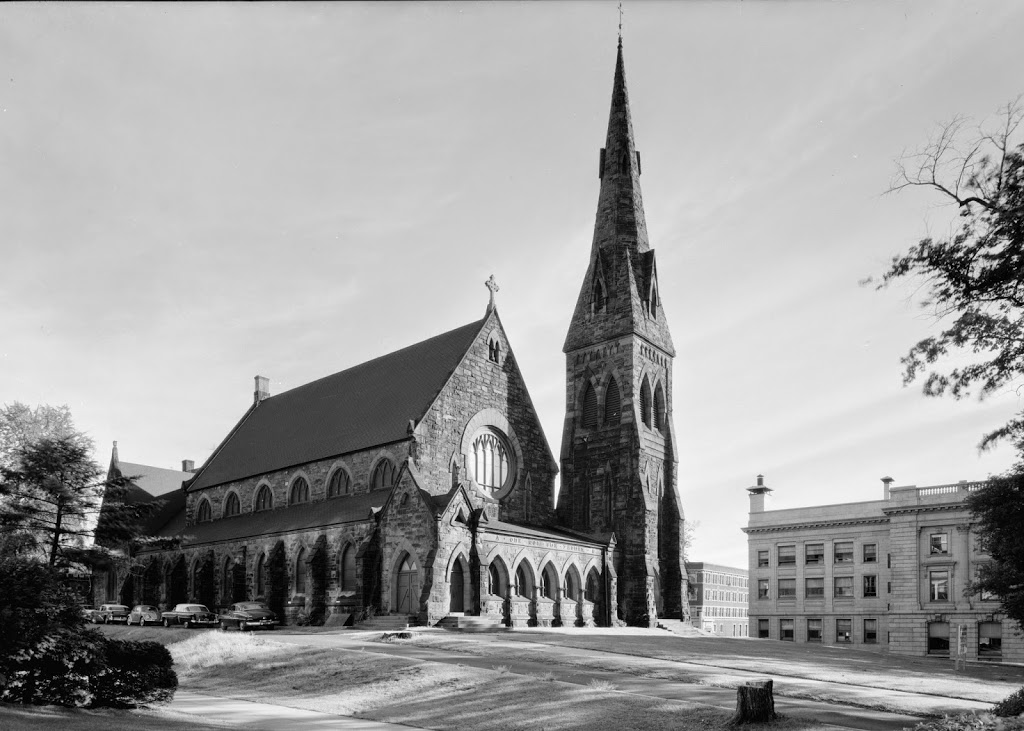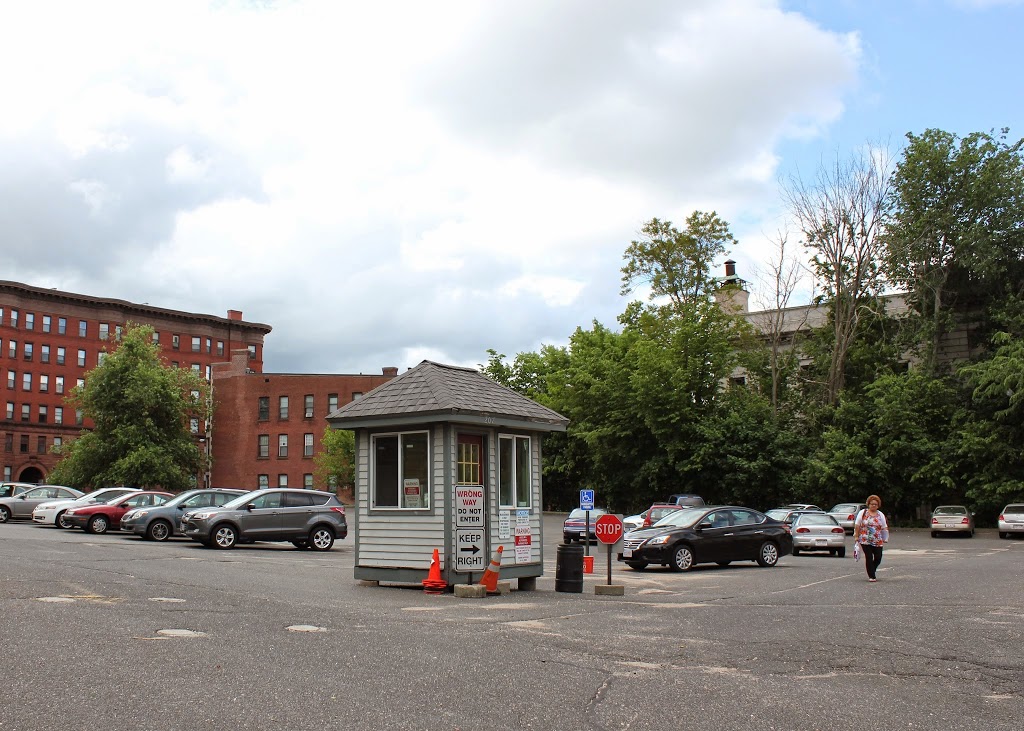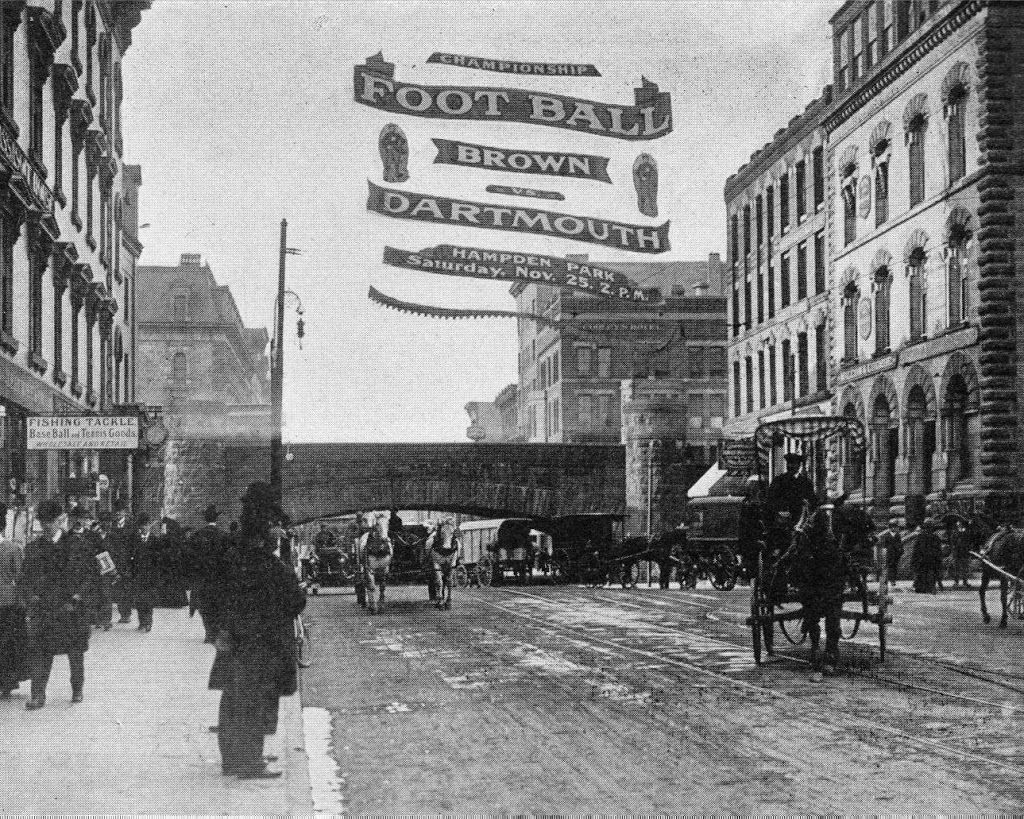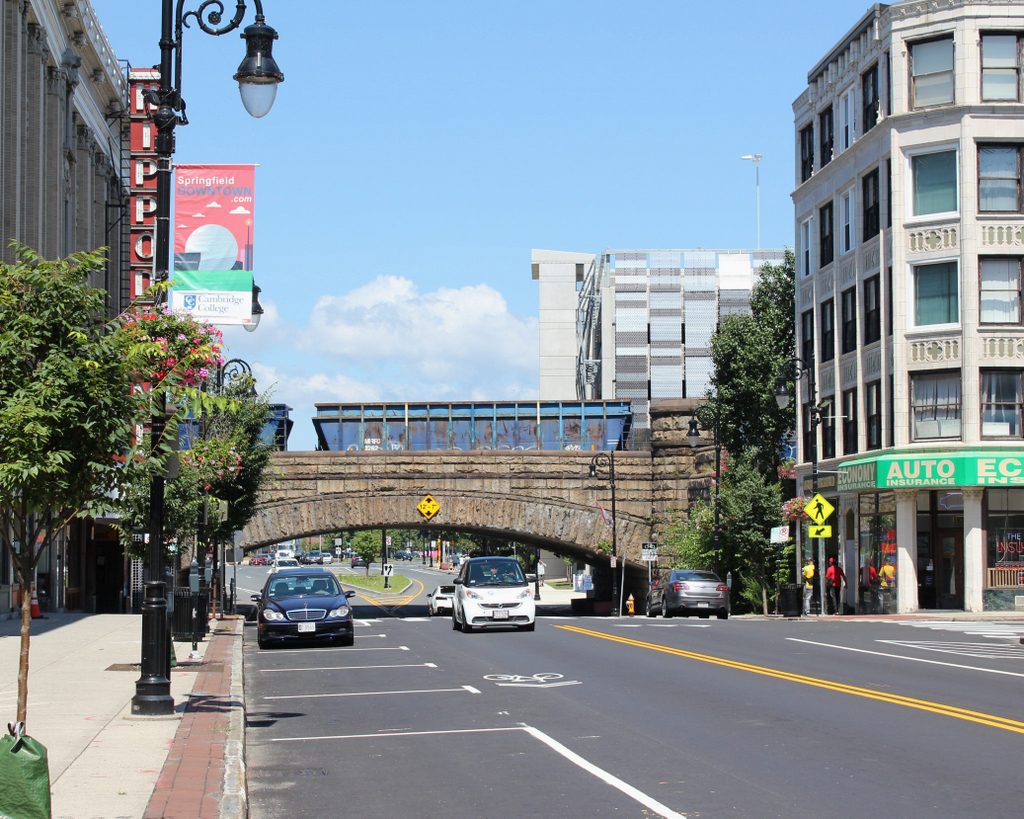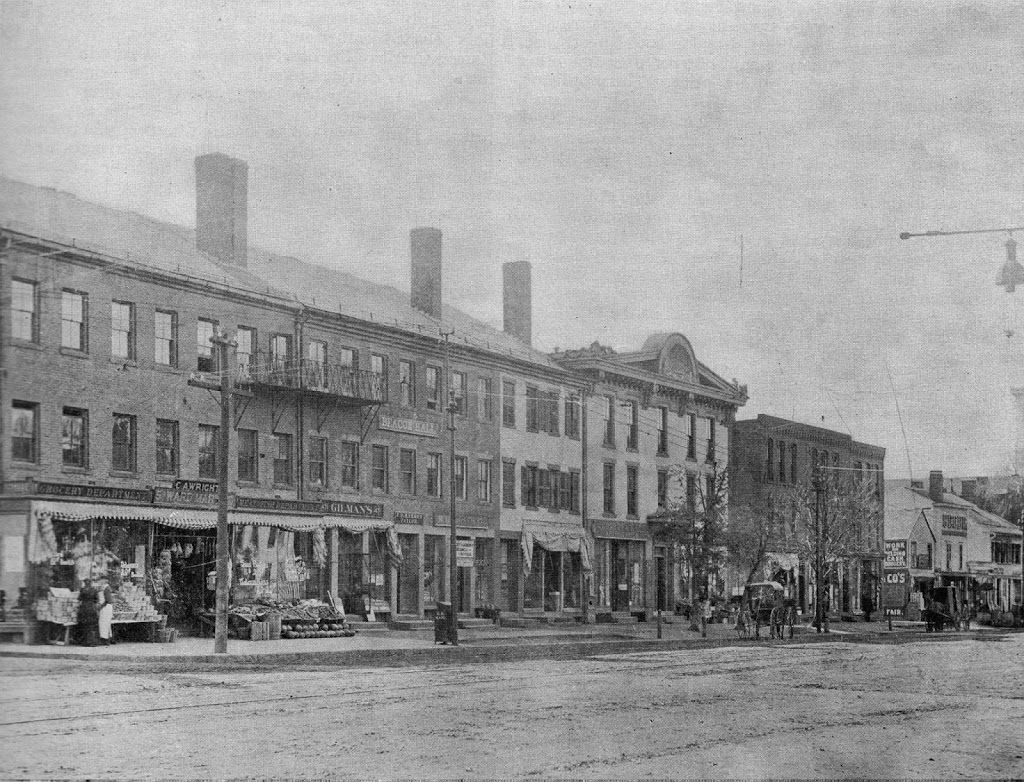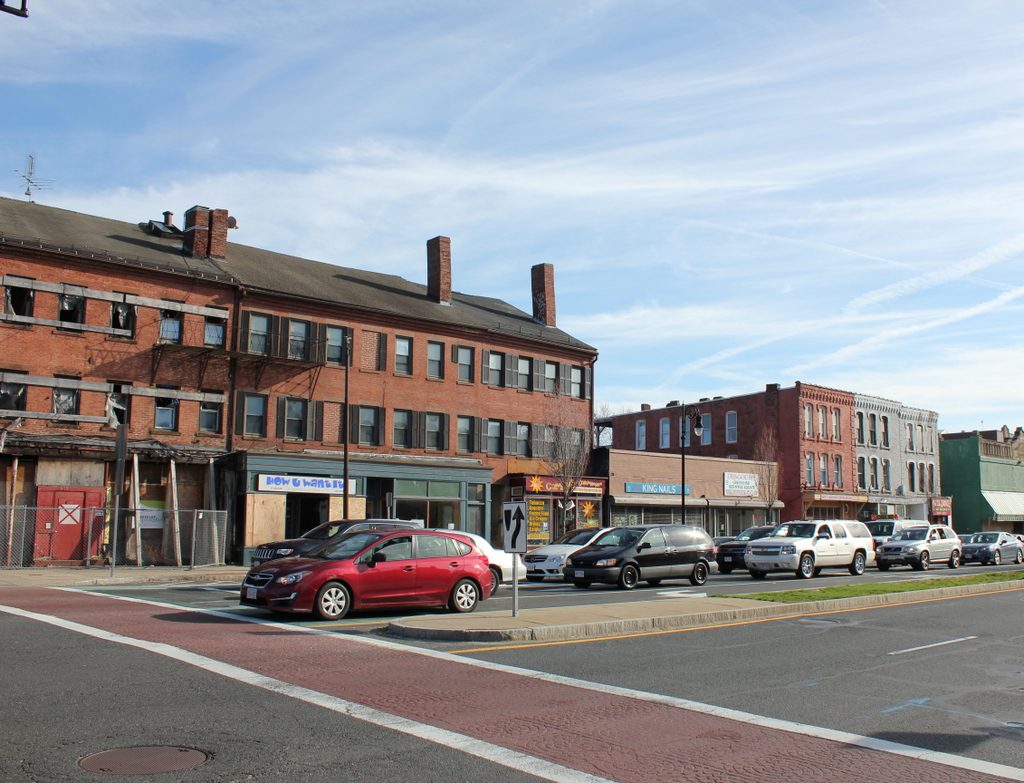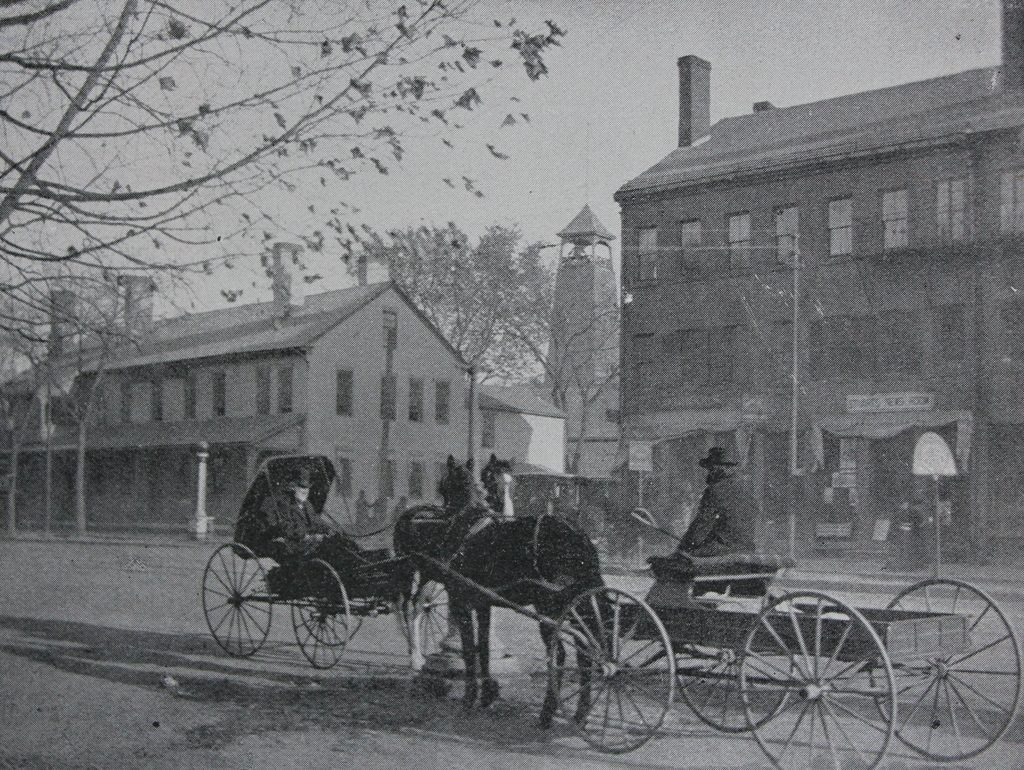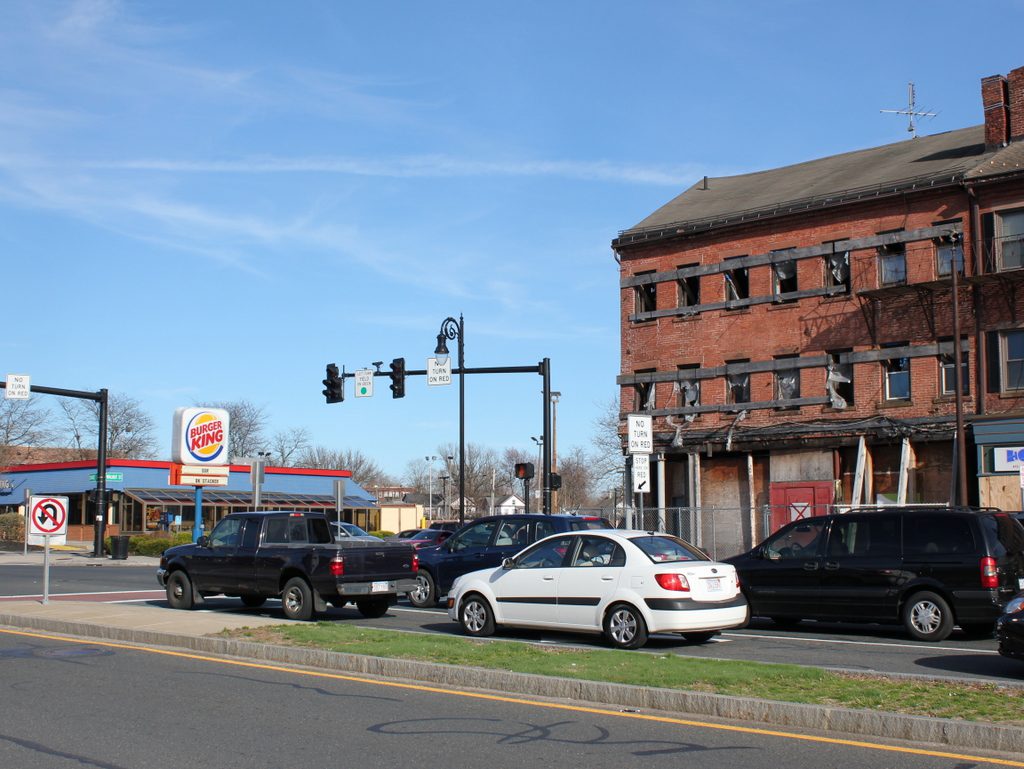The Rockingham House, on the southeast corner of State Street and Walnut Street, sometime around 1892. Photo from Picturesque Hampden (1892).
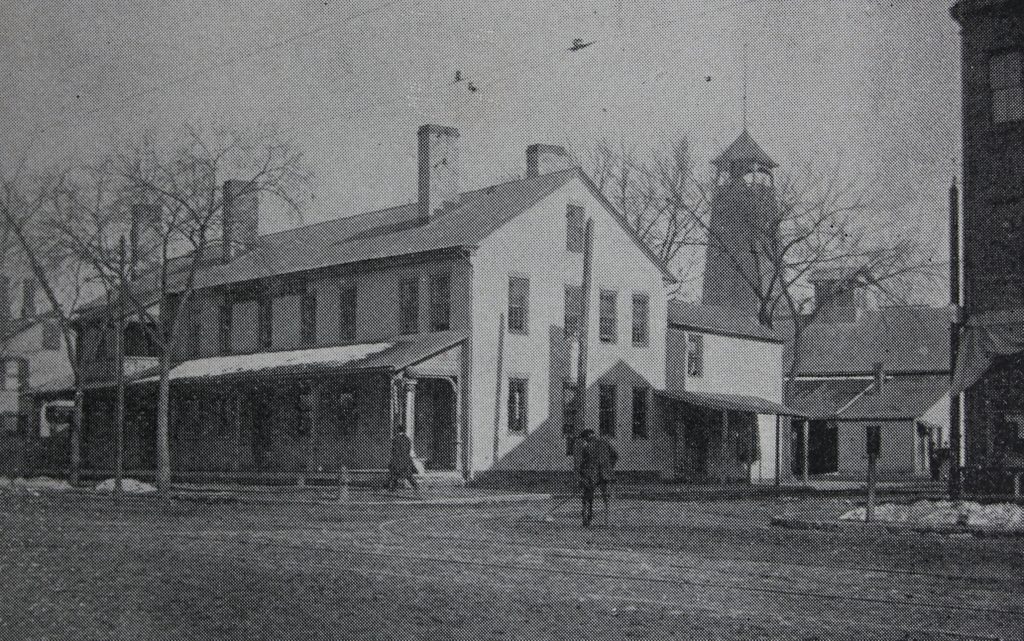
The scene in 2019:

Built in 1796 diagonally across from the Armory, the Rockingham House was originally called the Armory House, for obvious reasons. Along with being used as a lodging place for people associated with the Armory, it was primarily used by teamsters in the early part of the 19th century. Long before railroads and Jimmy Hoffa, teamsters were the primary means of overland transportation from Springfield to Boston. It was common for them to bring loads from riverboats up the hill. The inn was conveniently located right at the top of the hill, so they would often stay overnight there before heading out the next morning.
Once the railroads linked Springfield to Boston in 1839, this part of the inn’s business declined, and it began to be used instead as a boarding house. As mentioned in the 1884 King’s Handbook of Springfield, “It ceased to be a stopping-place for transient guests some time ago, but is still a pleasant home for some residents who do not care to keep house.”
Obviously, the Rockingham House no longer exists, although it wasn’t demolished to build a Burger King. Rather, it was replaced by a gas station – a 1974 article from the Springfield Republican indicates that it was demolished “several years ago.”

